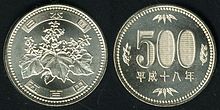
Geisha 艺伎
Also known as the “Land of the Rising Sun”, Japan is a country where the past meets the future. Japanese culture stretches back millennia, yet has also adopted (and created) the latest modern fashions and trends.
太阳国?(终于明白“日”本了)。这个国家又土又潮。历史悠久,袭过珍珠港,挨过原子弹,还有大地震。
As an island nation shut off from the rest of the world for a long time (with mild exceptions from China and Korea), Japan is very homogeneous. Almost 99% of the population is of Japanese ethnicity. The largest minority are Koreans, around 1 million strong, many in their 3rd or 4th generations. There are also sizable populations of Chinese, Filipinos and Brazilians, although many are of Japanese descent.
作为岛国,闭关锁国多年,大部分人都是大和民族。除此韩国裔的挺多,然后时中国、菲律宾、巴西的。
During the Edo period, Japanese culture had been strongly influenced by Confucianism. The Tokugawa Shogunate instituted a rigid class system, with the Shogun at the apex, his retainers below him, and the other samurai below that, followed by a vast population of commoners at the bottom. Commoners were expected to pay respect to samurai (at the risk of being killed if they didn’t), and women were expected to be subservient to men. Samurai were expected to a adopt a “Death before dishonour” attitude, and would typically commit suicide by self disembowlment (切腹 seppuku) rather than live in shame. Although the Edo period ended with the Meiji Restoration in 1868, its legacy still lives on in Japanese society. Honour still remains an important concept in Japanese society, employees are still expected to be unquestioningly obedient to their bosses, and women continue to struggle for equal treatment.
武士道和切腹。

Geisha 艺伎
Japanese people are fiercely proud of their heritage and culture, and hold on to many ancient traditions that go back hundreds of years. At the same time, they also seem to be obsessed with the latest technology, and consumer technology in Japan is often several years ahead of the rest of the world. This paradox of being traditional, yet ultramodern often serves to intrigue visitors, and many keep returning to Japan to experience this after their first visit.
对自己的文化,他们特别得瑟,比如 geisha 艺伎。
节日
5月份的假期不错
搭便车
Japan is an excellent country for hitchhiking, although there is no Japanese custom for this, and some Japanese language ability is almost mandatory. See Hitchhiking in Japan for a more detailed introduction and practical tips for this fine art.

这钱看着很漂亮
The Japanese currency is the Japanese yen, abbreviated ¥ (or JPY in foreign exchange contexts). As of January 2014, the yen hovers at around 100 to the US dollar. The symbol 円 (pronounced en) is used in the Japanese language itself. - Japanese ¥500 coins - Coins: 1 (silver), 5 (gold with a center hole), 10 (copper), 50 (silver with a center hole), 100 (silver), and 500 yen. There are two ¥500 coins, distinguishable by their color. (The new ones are gold, the old ones are silver). - Bills: 1,000 (blue), 2,000 (green), 5,000 (purple), and 10,000 yen (brown). ¥2,000 bills are rare. New designs for all the bills except ¥2,000 were introduced in November 2004, so there are now two versions in circulation. Most merchants will not object to receiving a ¥10,000 bill even for a small purchase.
如何拉屎
A typical washlet control panel. Some features of Japan’s toilets are worth mentioning. As elsewhere in Asia, you will find both Western-style porcelain thrones for sitting and floor-level units for squatting. (If you’re unfamiliar with these, it’s simple: pull your pants down to your knees, and squat facing the curved hood of the toilet. Get closer to the hood than it looks like you need to, or else you might miss.)
拉屎很简单,不要不习惯。跟我学,就跟滑雪的姿势。
Refs